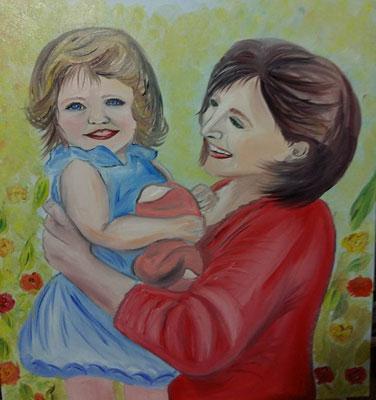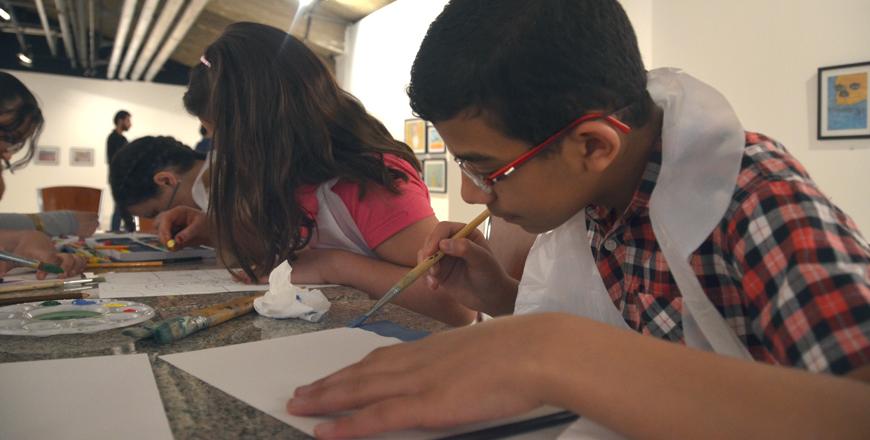You are here
Syrian woman paints in Zaatari ‘to change image of refugees’
By Khetam Malkawi - Jun 16,2016 - Last updated at Jun 16,2016

Artwork by Syrian artist Israa Al Fadhel (Photo courtesy of Israa Al Fadhel)
ZAATARI, Mafraq — Determined to change the image of her fellow Syrians in the Zaatari Refugee Camp as “uneducated and unskilled”, one woman decided to deliver a message to the world through her paintings.
Israa Al Fadhel, who lives in Zaatari camp, 80km northeast of Amman, is a professional painter who used to draw for joy before leaving her Syrian hometown of Daraa to seek refuge in Jordan in 2012.
“Now, my hobby has become a profession and a job that I earn a living from,” the 30-year-old said, adding that through the sale of her paintings she has managed to provide a better home for her children.
For the mother of four, complaining is not a solution to any problem.
When her husband was diagnosed with a psychological condition and stopped going to work several years ago, Fadhel became the just breadwinner for her children.
“When my husband was diagnosed with the disease, I became responsible for the family, and I did not want them to feel that anything was missing in their lives,” she told The Jordan Times in a recent interview.
So, she developed her hobby, and even though it was difficult in the beginning to afford the equipment to paint, she started selling some of her work.
Several of her artworks were sold at an exhibition, “Colours from Zaatari”, that was shown in Amman and Dubai.
But for Fadhel, art is not only a way to make a living. She also uses painting to help alleviate the suffering of traumatised children.
In 2013, Fadhel started volunteering at one of the humanitarian organisations in Zaatari camp and she noticed that children were drawing paintings that reflected the impact of conflict and war on them.
Seeing this, Fadhel started to use drawing “to provide psychological support for the children to get over their trauma”, she says.
“When I used to ask children to draw what was in their minds, they started drawing war, destruction and conflict,” she explained.
“So, I wanted to help them.”
Instead of drawing missiles and tanks, “I helped them draw the real image of Syria, and the beauty of Syria … to have hope in a better future… houses, flowers, their future career and what they dream to become,” Fadhel said.
With her help, the children’s paintings started to change.
“Even their choice of colours changed, they started using light colours instead of dark ones…. Instead of tears they started drawing smiles.”
At the artist’s “Colours from Zaatari” exhibition, she also displayed paintings by the children she trained, some of which also were sold.
“The message I wanted to deliver then was that Zaatari camp is not only for simple people. There are doctors, engineers and artists in the camp,” Fadhel said.
“We are creative people…. Wherever we are, even in the desert, we can create something.”
Related Articles
AMMAN — Before the civil war flared up in Syria, Emad Kafri was following in the footsteps of his father in Daraa, spending his free time pa
AMMAN — Nine-year-old Aseel Rumman has often dreamt of having her own art exhibition before she completely loses her sight. Rumman, who
Although Syrian children at the Zaatari Refugee Camp will still push wheelbarrows around to sell goods, they can now take pride in colourfully decorated carts that they themselves have painted.

















